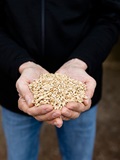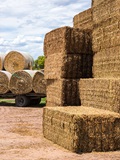Central SA
20 May 2020
| Date | C SA 23 | C SA 22 | C SA 5YA |
|---|---|---|---|
| 06-Jan-23 | 328 | 200 | 235 |
| 13-Jan-23 | 333 | 200 | 237 |
| 20-Jan-23 | 338 | 210 | 243 |
| 27-Jan-23 | 348 | 210 | 240 |
| 03-Feb-23 | 353 | 210 | 239 |
| 10-Feb-23 | 358 | 210 | 241 |
| 17-Feb-23 | 361 | 210 | 244 |
| 24-Feb-23 | 363 | 210 | 246 |
| 03-Mar-23 | 368 | 210 | 241 |
| 10-Mar-23 | 368 | 210 | 236 |
| 17-Mar-23 | 366 | 215 | 237 |
| 24-Mar-23 | 363 | 215 | 237 |
| 31-Mar-23 | 363 | 210 | 236 |
| 07-Apr-23 | 363 | 210 | 238 |
| 14-Apr-23 | 364 | 210 | 245 |
| 21-Apr-23 | 365 | 210 | 245 |
| 28-Apr-23 | 365 | 210 | 230 |
| 05-May-23 | 365 | 210 | 231 |
| 12-May-23 | 363 | 210 | 232 |
| 19-May-23 | 360 | 210 | 232 |
| 26-May-23 | 358 | 205 | 232 |
| 02-Jun-23 | 358 | 210 | 233 |
| 09-Jun-23 | 348 | 210 | 238 |
| 16-Jun-23 | 347 | 210 | 244 |
| 23-Jun-23 | 345 | 210 | 245 |
| 30-Jun-23 | 340 | 210 | 245 |
| 07-Jul-23 | 335 | 210 | 245 |
| 14-Jul-23 | 333 | 218 | 261 |
| 21-Jul-23 | 330 | 225 | 262 |
| 28-Jul-23 | 330 | 225 | 266 |
| 04-Aug-23 | 320 | 225 | 274 |
| 11-Aug-23 | 320 | 225 | 279 |
| 18-Aug-23 | 318 | 225 | 295 |
| 25-Aug-23 | 315 | 225 | 295 |
| 01-Sep-23 | 315 | 228 | 302 |
| 08-Sep-23 | 228 | 312 | |
| 15-Sep-23 | 228 | 303 | |
| 22-Sep-23 | 228 | 291 | |
| 29-Sep-23 | 228 | 263 | |
| 06-Oct-23 | 228 | 246 | |
| 13-Oct-23 | 228 | 241 | |
| 20-Oct-23 | 228 | 242 | |
| 27-Oct-23 | 228 | 244 | |
| 03-Nov-23 | 228 | 244 | |
| 10-Nov-23 | 228 | 246 | |
| 17-Nov-23 | 250 | 246 | |
| 24-Nov-23 | 290 | 254 | |
| 01-Dec-23 | 295 | 259 | |
| 08-Dec-23 | 300 | 262 | |
| 15-Dec-23 | 305 | 260 | |
| 22-Dec-23 | 315 | 266 | |
| 29-Dec-23 | 324 | 272 |
Notes:
Change in price is the change since the last report. Hay quoted is sourced and delivered locally, GST exclusive unless stated otherwise. It should be noted that local prices quoted may not be the cheapest available, sourcing it from another region may be more affordable, and buyers are encouraged to evaluate all options. Prices are indicative to a mid-range shedded product, and based on the best indication of market value at the time of reporting. It should be noted there is a wide variation in quality of hay, prices for a mid-range product will not reflect the weighted average of trade. Prices will naturally vary based on the product quantity and quality, buyer/seller relationship and the size of the trade.The hay report has been commissioned by Dairy Australia to provide an independent and timely assessment of hay markets in each dairy region. This report is created using data provided by the Australian Fodder Industry Association (AFIA). It should be remembered that actual prices may vary for quality or other reasons. Whilst all reasonable steps have been taken to ensure the accuracy of the information contained in this report, Dairy Australia disclaims all liability to the fullest extent permitted by Australian law for any inadvertent errors and for any losses or damages stemming from reliance upon its content. Dairy Australia recommends all persons seek independent advice and, where appropriate, advice from a qualified advisor before making any decisions about changes to business strategy.
Commentary
- Very little rainfall in the region this week, with falls of less than 5mm of rain on the Fleurieu Peninsula and surrounding areas, and no rain recorded elsewhere in the region. Dry sunny conditions for most days.
- Pastures in the region remain green, though the northern parts are beginning to feel a little dry according to some comments. However, subsoil moisture is still looking good, and the grass is providing some green feed.
- Hay producers in the region are feeling optimistic, with the expectation that the hay cutting will kick off in earnest in around 3-4 weeks. Hay sheds are showing plenty of empty space ready to be refilled from the next season.
- As the grass continues to grow in the region, there is more silage being cut, as with most areas, mixed farming enterprises are keeping this on-farm, but some is making its way into the market and into local dairy farms.
- Enquiries have remained high, but with local green feed and reasonable on-farm stores, most of the demand is originating from the drier parts of the country, especially into northern NSW and Queensland. The export market is also seeing a few hay trucks moving around.
- No change to prices this week.
- Cereal hay: +/-0 ($290 to $340/t). Prices remain steady this week.
- Lucerne hay: +/-0 ($400 to $435/t). Prices remain steady this week.
- Straw: +/-0 ($95 to $140/t). Prices remain steady this week.
- Please note: Unless stated otherwise, prices are per tonne, sourced and delivered locally. The price range indicated is for feeds of varying quality with the price range generally indicative of quality of feed. We recommend feed testing and viewing of fodder before purchase to be sure of the quality of feed.

